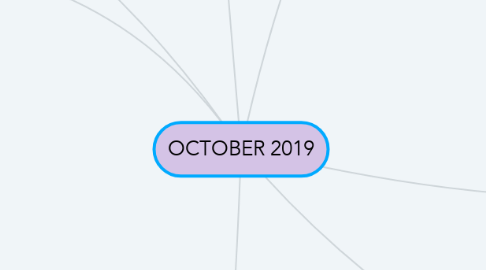
1. Rural Ireland
1.1. Spalpeen- travelling labourers, hired at harvest time when needed.
1.2. Cottiers- worked for large farmers, had one acre of ground which he grew potatoes and built a basic cabin on, depended on potatoes for food, sometimes kept a pig.
2. Transport Revolution
2.1. Thomas Telford and John Mac Adam- built better roads.
2.2. James Brindley- built first canal- Duke of Bridgewater- bring coal from his mines- Manchester
2.3. George Stevenson- invented the "Rocket".
3. Agricultural Revolution
3.1. Enclosure Acts
3.1.1. Land enclosed and divided. Better managed. Easier to control weeds and disease. Commonage gone (poor moved to the towns).
3.2. Norfolk 4 Field Crop Rotation
3.2.1. Wheat, turnips, barley, clover and grass- different crops in each field every year- no field left empty- food for cattle in winter
3.3. Selective Breeding
3.3.1. Robert Bakewell- cattle and sheep- only healthy animals used for breeding. Improved quality of livestock- faster growing and heavier animals as a result- meat more available and cheaper- people lived longer.
4. Ireland 1840s
4.1. The Great Famine 1845-1850
4.1.1. Causes
4.1.1.1. Sub-division of land- tenant farmer divided his land among his sons- farms got smaller and poorer- Ireland was soon over-populated.
4.1.1.2. Blight- a disease which destroyed potato crop- many died.
4.1.2. Help for Famine Victims
4.1.2.1. Workhouses- 1838- Poor Law Relief Act- help huge numbers of people in absolute poverty. Ireland divided into 130 districts/unions- controlled by "Board of Guardians"- built and ran workhouses.
4.1.2.1.1. Conditions- very harsh to discourage people. Families- separated. Meals- basic (milk, potatoes, porridge). Work- men worked in fields or broke stones. Women made clothes in workhouses.
4.1.2.2. Soup Kitchens- gave food to poor- "Society of Friends" (Quakers)- indian meal (maize) bought in U.S.A- bought at low price.
4.1.3. Results of Great Famine
4.1.3.1. Pop. decreased- 1 million died, 1 million emigrated (terrible conditions on coffin ships- many died)
4.1.3.2. Sub-division of land ended- eldest son inherited land- age of marriage increased- birth rate decreased.
4.1.3.3. Irish language declined- children encouraged to learn English- language spoken in America.
5. Impact of living conditions in industrial towns on diet and health of ordinary people.
5.1. 1842- Edwin Chatwick- "The Sanitary Conditions of the Labouring Population."- 1848 Public Health Act- clean streets, inspect new housing, increase piped water supplies, build new sewers.
6. Efforts to improve working conditions in factories and mines in Britain during the 19th Century.
6.1. William Lovett- "The People's Charter"- demanded right to vote in secret ballot- Chartists.
6.2. Earl of Shaftsbury- wealthy landowner and M.P- sought to improve women and children's working conditions-
6.3. Robert Owen- cotton mill owner- treated workers fairly- paid workers well- provided housing in New Lanark- free education for children.
6.4. 1833 Factory Act- children 9-13yrs- max 6h work.
6.5. 1842 Coalmines Act- women and children cant work in mines.
7. Industrial Revolution
7.1. How did the Agricultural Revolution contribute to the Industrial Revolution?
7.1.1. Increased pop. because of more and better food, providing more people to work in factories and mines.
7.1.2. Newer machinery and farming methods meant there were less people needed to work on farms- went to work in factories and mines.
7.2. Why did the Industrial Revolution begin in Britian?
7.2.1. Plentiful supply of coal and iron ore
7.2.2. Inventors
7.3. The Textile Industry
7.3.1. First to be industrialised. Spinning wheels and hand looms in domestic industry.
7.3.1.1. John Kay's Flying Shuttle
7.3.1.2. James Hargreave's Spinning Jenny
7.3.1.3. Richard Arkwright's Water Frame
7.3.1.4. Samuel Crompton's Mule
7.3.1.5. Edmund Cartwright's Power Loom
7.3.2. These machine had to be put in factories and powered at first by water wheels and then by steam.
7.3.2.1. Thomas Newcomen's Steam Engine- could pump water out of mines.
7.3.2.2. James Watt's- could turn wheels.

